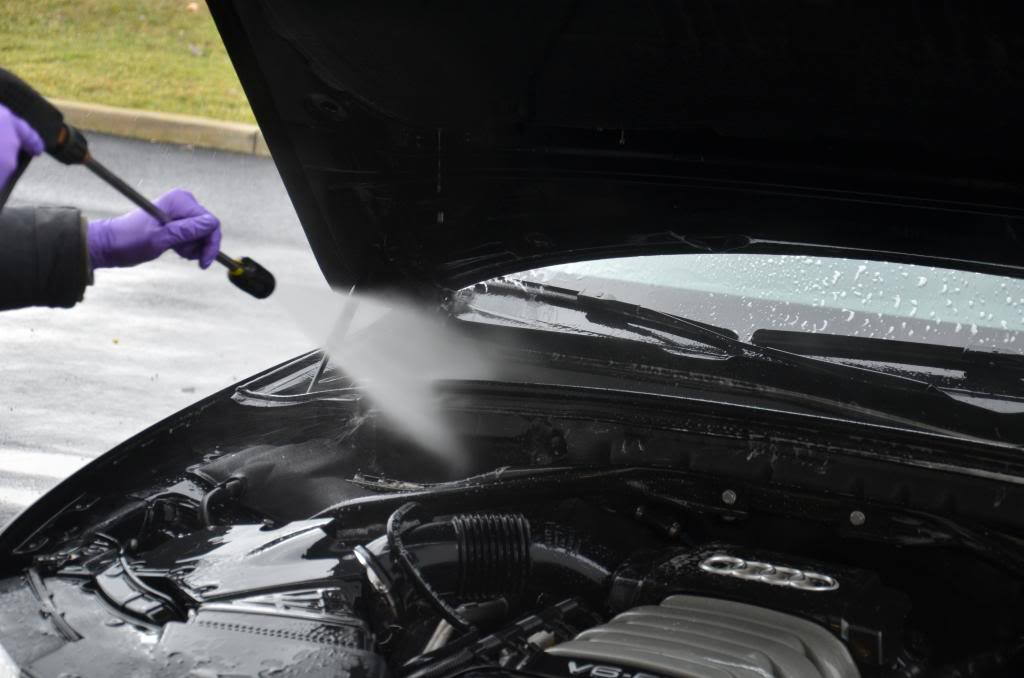
Pressure Wash Engine: How to Do It Safely
Here at zero2turbo, we always get this question a lot: “Can I pressure wash my car engine?”
When we answer yes, there’s some kind of bewilderment in people’s eyes. It is as if they think pressure washing will blast some parts and destroy the engine. Who wants that to happen to their car?
There are valid reasons to doubt the safety level even of the best brushless electric pressure washers of 2022. After all, there are many horror stories of pressure-washing-gone wrong so other car owners believe it’s not a good way to clean their engine.
Despite the bad experiences, pressure washing is still the most effective way to get rid of dust, oil, and grime. If you do it right, you’ll be amazed by the result- a clean and sparkling engine that reminds you of how it looked when it was new.
How To Pressure Wash Engine
You can use either a gas or electric-powered pressure washer for this task. A heavy-duty model is unnecessary; a pressure washer designed for home use is enough.
Do: Attach a 40-degree spraying nozzle tip. Make sure that you hold the lance three feet from the engine. Use a water spray with 2x more power than a garden hose.
Don’t: Use a heavy-duty gas pressure washer and a zero-degree blast nozzle tip. Never set the pressure to 3,000 PSI if you don’t want to destroy the engine.
Now that you know the basic safety rule, here are the steps on how to clean the engine:
1. Get the things that you need
You don’t want to stop and start while you’re already cleaning, so you better ensure that you get everything by your side. Typically, here are the things you need:
- Plastic bags and adhesives to cover the parts
- Non-corrosive cleaner that is safe for metal surfaces and effectively removes stains, dirt, and grime when pressure washing
- A toothbrush or any small scrubber that can easily get into hard-to-reach areas
- White or green tip pressure washer nozzle
- Smooth drying towels
- Engine care products
2. Cool down the engine
You need the engine to be warm, not too hot. If you have just used the car, wait for at least 15 minutes. Place the hood up to make cooling down faster.
3. Cover Important Components
There are car electronics inside the hood that must be protected from water jets. As you know, water and electricity don’t mix well. Small parts that tend to loosen up when hit by water pressure also need to be protected.
You can refer to the car manual for instructions on what parts inside the hood must be covered with a plastic bag. If this information is not available, you can check the IP or “Ingress Protection” rating of the various components in the engine area. The IP rating describes the sealing effectiveness of an electrical part against the invasion of foreign materials and moisture. The different IP ratings are the following:
- IP1 for dripping water
- IP3 for spraying water
- IP4 for splashing
- IP5 for water jets
- IP6 for powerful water jet; and
- IP7 for water immersion
If you can’t see the IP rating, just assume that that part is less than IP5 and needs to be covered with a plastic bag. You need to cover essential parts: alarm systems, distributor, alternator, and other electronic components.
4. Spray on engine degreaser
Can you see thick grime build-up in most parts of the engine? If yes, you need to spray engine degreaser first to easily get rid of the filth when pressure washing. An engine degreaser effectively loosens up oil and grease to make cleaning easier and faster. Wait for at least five minutes for the chemical to soak before rinsing.
5. Pressure washing
Make sure you know how to operate the pressure washer. Use the right tip to create just the right amount of water pressure. You don’t need a powerful blast that can damage the parts. Start with the green tip and the white tip for great results.
Remember to stand back and make sure that the nozzle is at least feet from the engine. You can move closer if you want to increase the water jet power.
6. Wipe, remove the covers and apply engine care product
- Wipe all the wet parts using a shammy or dry towel.
- Remove the plastic bag covers
- Air dry for 20 minutes
- Apply engine care products to protect the surface from rust, dirt, and grime.
- You now have a clean and sparkling engine. Put the hood down and enjoy the ride!
